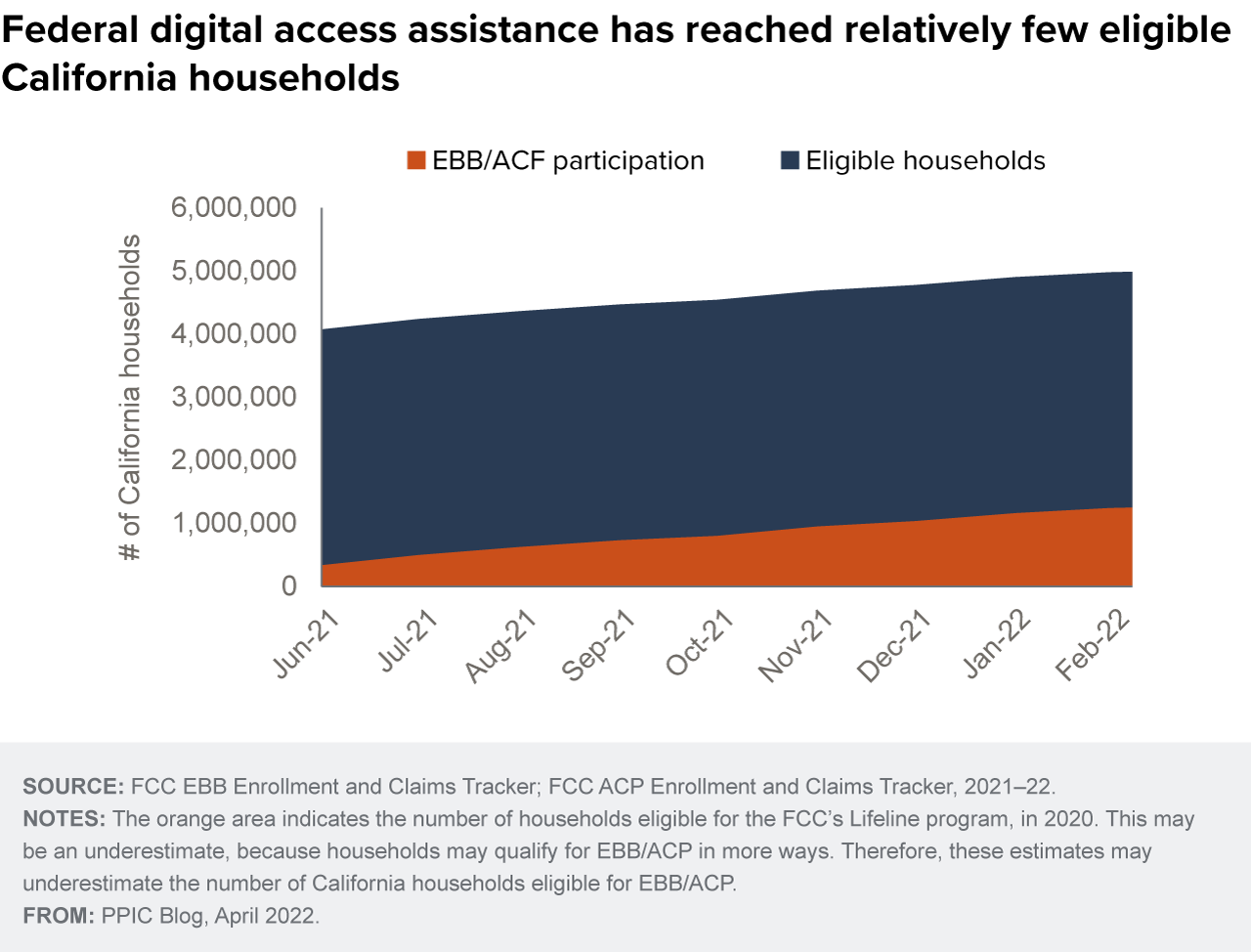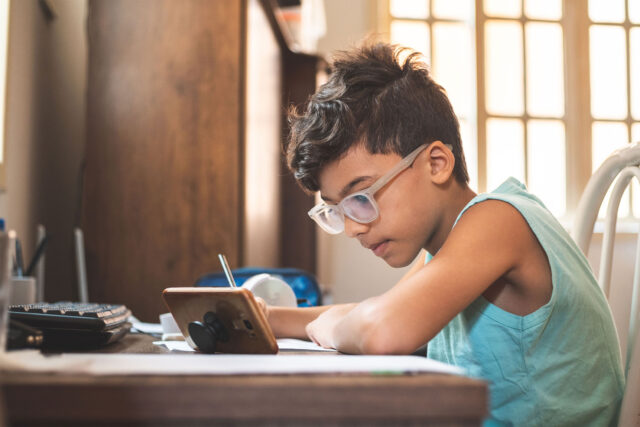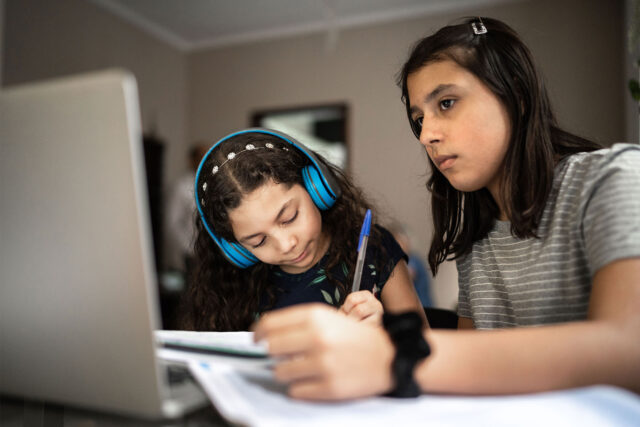The COVID-19 pandemic has spotlighted the importance of universal digital access. The gaps in reliable access to the internet and digital devices that have long contributed to educational inequities were even more evident during distance learning. Over the past two years, educators and policymakers have addressed affordability and lack of infrastructure—two key barriers to universal access—and achieved some measure of success.
Schools have made substantial strides toward closing the digital divide, particularly by providing access to devices. At the beginning of the pandemic, 1.7 million (28%) Californian students lacked access to a connected device suitable for distance learning, and at least 1.1 million (17%) lacked sufficient broadband access. The pandemic-related influx of federal and state stimulus dollars helped schools purchase devices and provide broadband connectivity to more than 2 million students during the 2020–21 school year. This includes students who did not have any access as well as students who had to share a device with others in their households.
Our recent work shows that digital access improved dramatically for low-income households with K–12 students; the share with reliable access increased from 44.8% in spring 2020 to 64.4% in spring 2021.
To help schools continue narrowing gaps in access to remote learning, Congress authorized the $7.2 billion Emergency Connectivity Fund (ECF) in March 2021. This funding allows districts, charter schools, and libraries to purchase or seek reimbursements for laptops, Wi-Fi hotspots, routers and other eligible equipment or services delivered between July 1, 2021 and June 30, 2022. The FCC recently extended the service delivery date to June 30, 2023. More than 500 California districts applied for ECF funding; the latest data show that in California ECF has provided devices to 1.2 million students and connected about 900,000 students with broadband.
The ECF has the potential to eliminate the vast majority of unmet need for devices, but sustaining broadband access and replacing out-of-life cycle devices may be a challenge in the long term—after the fund runs out.

Other federal investments have helped students and families access the internet for education, health care, and work. The FCC’s Emergency Broadband Benefit (EBB) program, launched in May 2021, provided a discount of up to $50 per month toward broadband services for eligible households. Eligibility criteria included but were not limited to participation in safety net programs, having an income at or below 135% of the federal poverty line, or having experienced a loss of income due to the pandemic. Eligible households could also receive a one-time discount of up to $100 for a device, but they were required to contribute at least $10 toward the purchase.
The EBB expired on December 31, 2021, and was replaced by the Affordable Connectivity Program (ACP), which offers long-term support for households. The maximum monthly ACP benefit is $30, and eligibility criteria expanded to include a household income at or below 200% of the federal poverty line.
The FCC estimates that at least 3.7 million California households are eligible for federally funded digital access assistance. However, preliminary data show that as of March 2022, only 1.2 million California households participated in the EBB or ACP.

Several factors have contributed to the low take-up rates. First, awareness is very low: nationwide, only 23% of adults have heard “a lot” or “some” about the Emergency Broadband Benefit. Second, many households may be discouraged by the multi-step application process, which requires them to first apply for funding and then arrange for a participating internet service provider to apply the subsidy. Third, some internet service providers initially required enrollees to upgrade their existing data plans to more expensive plans, so some households may have decided not to apply for fear of higher bills if they lose eligibility or the program ends.
An equitable digital infrastructure is essential to an inclusive recovery from this pandemic. Last year, California passed Senate Bill (SB) 156, which invests $6 billion to expand broadband infrastructure and enhance internet access in unserved and underserved communities. It allocates $3.25 billion for a statewide open-access middle-mile network, and $2 billion for last-mile infrastructure.
SB 156, along with federal Infrastructure Investment and Jobs Act investments, has the potential to establish California as a leader in equitable digital access. As these investments are rolled out, PPIC will continue to assess digital equity gaps and spotlight high-impact local programs that could be adopted by communities across the state.
Topics
coronavirus COVID-19 digital divide internet access K–12 Education school fundingLearn More

Achieving Digital Equity for California’s Students

Building a Community-Owned Broadband Network in Imperial County

California’s Digital Divide

Commentary: Narrowing the Digital Divide with Pandemic Benefits

The Digital Divide Has Narrowed but Still Affects California’s Children




